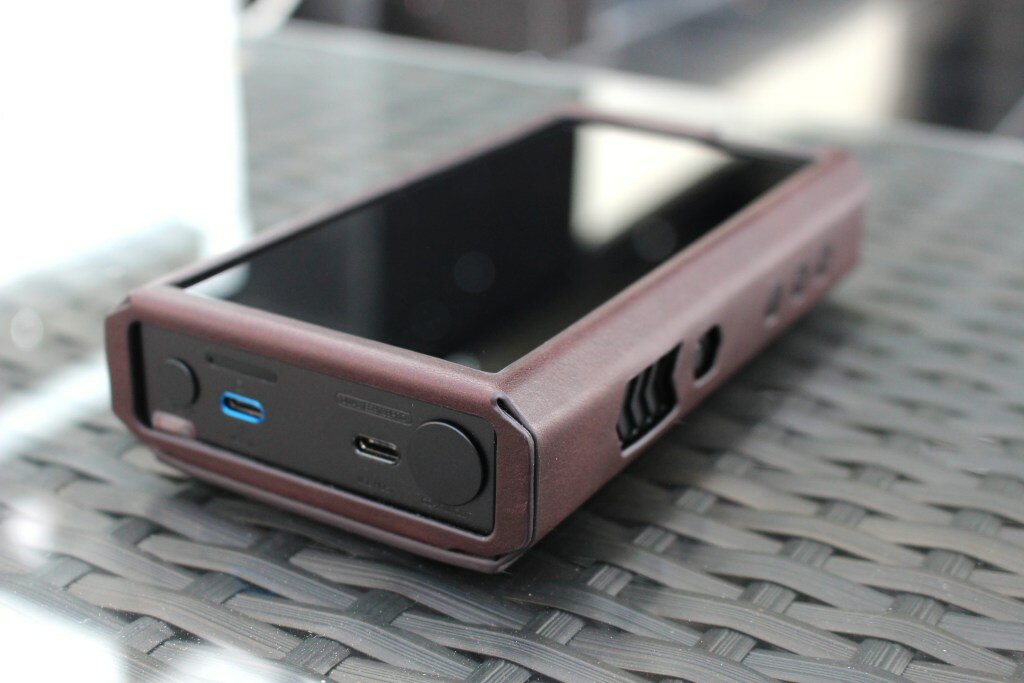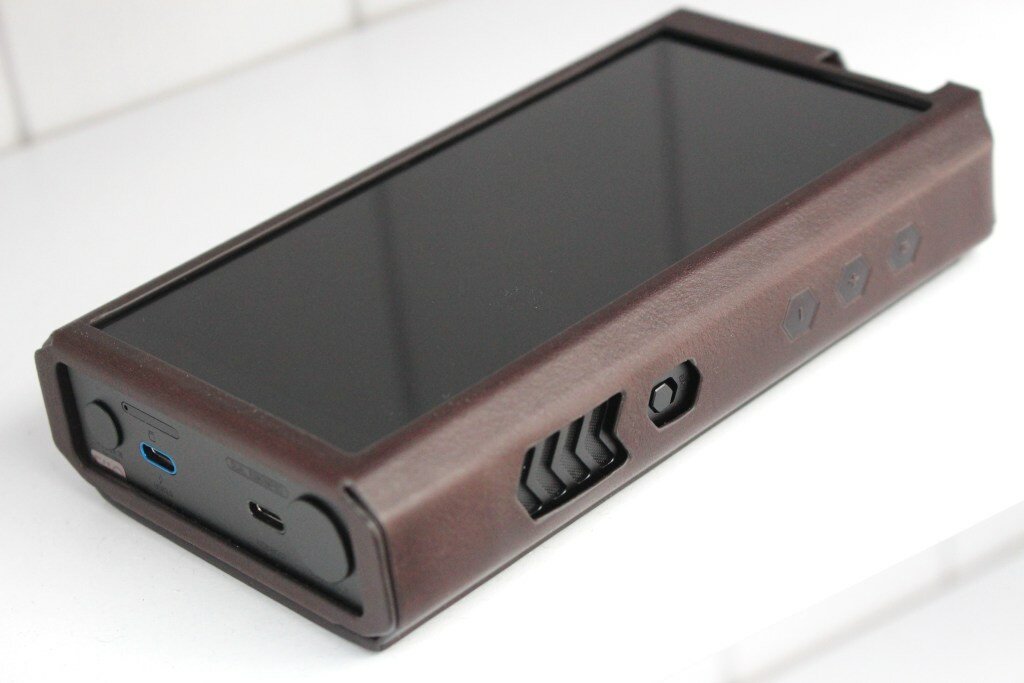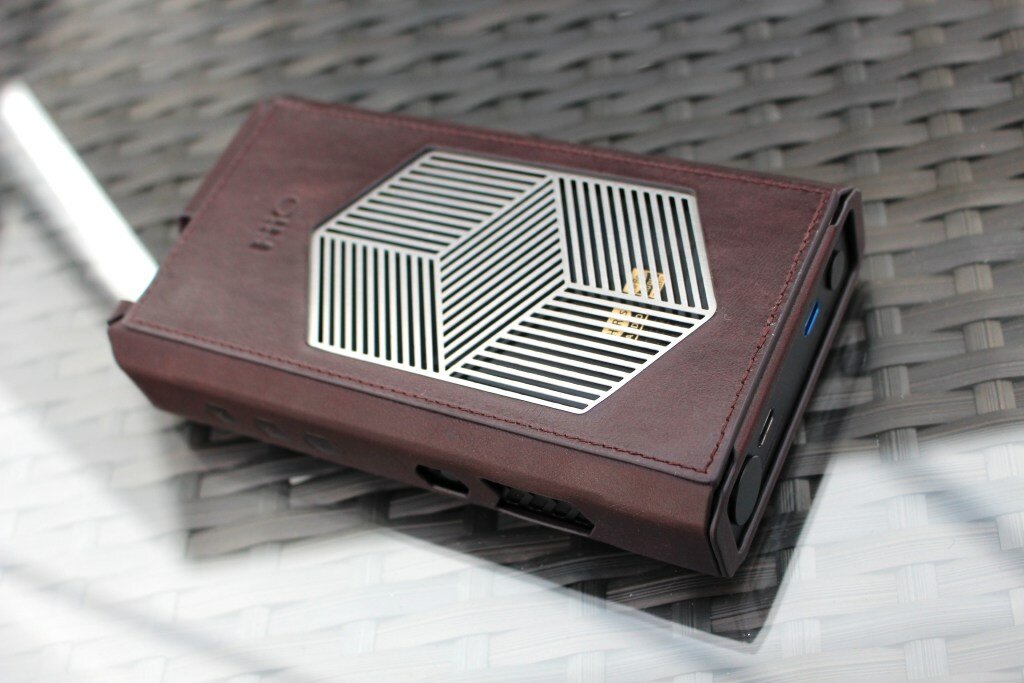FiiO have continually released outstanding value for money products catering towards the low to mid-range market. More recently, they have accrued customer sentiment, audio engineering prowess and a willingness to listen to release high-end premium offerings in both desktop and portable audio format.
The result has culminated in the Fiio M17 flagship portable player – a feature rich DAP (digital audio player) featuring 2 x flagship ES9038PRO DAC chips in a fully balanced and differential configuration. This lies in contrast to the AKM twin AK449EQ chipset of the previous gen Fiio M15 before it; both DAPs however feature a NDK femtosecond crystal oscillator for the purposes of time control.
FiiO have redesigned the FiiO M17 from the ground-up with the emphasis to create one of the more advanced delta-sigma DAPs that the marketplace has currently to offer. At a retail price of $1799, the FiiO M17 represents a flagship offering placing it in competition with the lines of the $1659 Shanling M8.

The Packaging
The Fiio M17 comes in a rather hefty box with a slide box to showcase the M17 in a foam insert. Like the Fiio Q7, the M17 comes with a tanned leatherette case (this time in a darker brown colour).
Beneath is a smaller accessory compartment which houses a USB Type C cable, switching mode power supply, quick-start guide, a multi-function dock as well as a warranty card.
As expected from a product of its price, the Fiio M17 unboxing is that of a premium experience. It is nice to see the inclusion of a well-made and aesthetic leather case to support the DAP which is often omitted even at this price range.

The Design & Build
Like the Fiio Q7, the Fiio M17 which is constructed from a solid CNC machined aluminum chassis with a ribbed and glass panel finish. Unlike the Fiio Q7, the M17 comes complete with a capacitive screen since it is a full-fledged digital audio player compared to the former portable desktop-class amplifier.
Overall, the design philosophy employs a sharper look with hexagonal buttons, LED glowing grills and a low-profile potentiometer dial. This leans away from the M15’s curvilinear aesthetics and pays homage to a gamer’s device.
At the top of the device, the M17 sports a range of I/O options including both a 6.35 mm and 3.5 mm SE TRS, a 2.5mm TRRS & a 4.4mm Pentaconn socket. Like the Q7, the M17 offers a wide variety of inputs and outputs enabling the device to support a range of transducers.

At the right of the device, Fiio have opted for hexagonal tactile buttons including a power on/off alongside fast forward, fast backward and play/pause buttons. The use of downward arrow grills and hexagonal shapes represent a stark departure from the traditional M15 design philosophy and into a more ‘Tron-esque’ aesthetic.
At the bottom of the device, the Fiio M17 hosts digital I/O via USB or Coax in//out – as well as DC 12V two-pole input and a single microSD port allowing users to upgrade storage from the onboard 64 GB. At the center, there is a single USB port allowing charging and data transfer as well as digital OTG/DAC services from the same port.
The Screen
Rather like modern day smartphones, the M17 comes equipped with a capactive multitouch 5.99” display panel. It offers 1080 x 2160 FHD+ 1:9 in-cell display panel with a 403 ppi pixdel density.
The screen is outstanding and offers excellent color reproduction with great saturation. The viewing angles are also impressive and image quality is crisp and vivid. Fiio have opted for Snapdragon 660 SoC which also enables a zippy performance from the digital audio player.
Overall, Fiio have done well to reduce the border to enable a near bezel-less display akin to modern smartphones.

The User Interface
The M17 comes equipped with the Android 10 Operating System. For those who own an Android device, this is a familiar and well-trodden user interface which is not only fluid and smooth but highly intuitive.
Combined with a 4GB of RAM and the Snapdragon 660 SoC – the FiiO M17 offers a performance which rivals that of a modern smartphone. Some may argue about the need for a dedicated audio player to have such an ‘overkill’ processing system – however it does uplift the experience with a zippy performance particularly when using third-party applications like Spotify and Tidal.
Often older generation DAPs did have latency issues owing to the less than capable choice of processors – however the M17 is no slouch and handles gestures and navigation with ease.
There is an option to use ‘Pure Music Mode’ which leaves users with a more stripped down DAP with just the FiiO Music app for offline music listening. The GUI is quite polished here and FiiO have implemented endless shortcuts which can checked out using their Quick Start Guide.
The Internals
Under the hood, FiiO have moved towards the faster 8-core Snapdragon 660 which also featured in the M11 Plus LTD. The result being a much more capable and rapid performance especially when multitasking on the M17. It is refreshing to note the use of Android 10 and there is no longer a need to use APKPure or CoolAPK for software updates – rather users can use the official Google Play store to download 3rd party apps like Spotify or Tidal.
At the core of the FiiO M17 is two desktop-grade ES9038 PRO DAC chips which are currently the flagship DAC chips of ESS. FiiO have even gone to the lengths of shielding the whole digital board and amplification stage to reduce electromagnetic interference.
Two NDK femtosecond crystals work in conjunction with the 3rd gen FGPA clock algorithm to keep jitter to a minimum and preserve the timing of the DAC.
The FiiO M17 employs a Qualcomm QCC5124 Bluetooth chip which supports two-way LDAC lossless Bluetooth as well as SBC, aptX, aptX-HD, LDAC and HWA codecs. The XMOS XU-208 chip is used to provide info transfer via the USB DAC mode and supports up to 768 kHz/32 bit and DSD512 input.

The Amp & Power
FiiO have used two THX-AAA-788 desktop class modules with 1.5 Watts per channel in 32 Ohms via its balanced output and 3 Watts per channel in DC mode. This currently places it as one of the powerful DAPs in the current marketplace enabling the FiiO M17 to drive a range of high impedance transducers.
Interestingly, FiiO have partnered with THX to produce a new amp opamp called the THX788+ which was originally used in desktop amplifiers.
The Battery
The FiiO M17 packs in a massive 9200 mAh which is higher in capacity than the 7490 mAh of the M15 before it as well the Cayin N8’s 7000 mAh. This enables roughly 11 hours of music playback from single-ended mode and 9 hours from balanced output.
From zero to full charge, the M17 takes about 4.5 hours which is slightly longer than the M15 and the Lotoo PAW 6000.
Sound quality
The Fiio M17 offers a highly dynamic, reference and transparent sound which stems from its implementation of dual ES9038PRO chips and THX AAA 788+ amp modules.
While the M15 had an extremely transparent and reference signature, the M17 tilts even more towards an organic sound with bigger body and smoothness. This is seen throughout the frequency spectrum from the lows, to the mid-section and treble. While there is an emphasis on an organic tone, the M17 never skips out on technicalities – with fantastic resolution and micro-detail revelation.
At the low-end, the M17 outputs a rich bass line with plenty of verve and prowess. Though there is plenty of detailing, the M17 makes the presentation lean more towards the natural side than analytical. To this extent, the M17 delivers an organic sound while being responsive and balanced.
This is also true of the midrange where notes sound full, dense, and enveloping while still maintaining supreme resolution. It is impressive to hear the sound coming out of the M17 which is very reminiscent of full-desktop sized setups in a more portable form factor. The M17 adds a more layered sound to tracks and delivers plenty of headroom for both easy to drive and hard to drive transducers alike.
While the M15 relied more on a leaner reference sound in its high-end, the M17 delivers higher levels or resolution while infusing a more natural top-end performance. All in all, the M17 outputs a beautifully rapid transient response while capturing an open-wide soundstage with full-bodied notes and dynamism.
Comparisons
Fiio M15 ($1299)
The Fiio M15 represents the previous generation DAP behind the current M17 flagship. While the M15 was heralded as a class leader owing to its transparency and reference sound, the M17 kicks it up a notch with an even more sublime sound. Notes are more fuller bodied, there is a more analog sound with a richer tonality and less lean treble range. The M17 hosts an outstanding black background and is capable of driving power hungry headphones to loud levels with a large headroom. To this extent, the M17 performs with more authority, expansiveness and highlights more dynamic range than the M15.
Shanling M8 ($1659)
The Shanling M8 and the Fiio M17 are priced closely making them natural competitors at premium hi-end market range. In terms of the sound signature, the M8 shares a density in its midrange profile as the Fiio M17 does.
However, the former DAP sounds more musical with a lushness to its note quality whereas the Fiio M17 infuses more details, reference quality and expansiveness in its set up. The M8 is slightly more mid-forward, whereas the M17’s midrange is slightly further back in relation. The M17 is an incredibly powerful DAP and offers more headroom and space when paired with higher impedance devices.
Conclusion
The FiiO M17 is an outstanding digital audio player which offers desktop-level performance in a portable form factor. The plethora of input and output options together with its reference full-bodied sound, streaming capabilities and versatility – certainly place in the top tier of digital audio players to contend with.
The latest Android 10 OS, high quality screen and fast processor are all icing on the cake when it comes to the smooth and fluid performance that this media player offers. For all these reasons, the M17 offers a steal at the sub $2K price range and strongly deserves a place in the best DAPs that the marketplace has to offer.
FiiO M17 Specs:
- Dual 8-Channel ES9038PRO DACs
- 3000mW per Channel THX AAA-788+ Amp
- 1/4″ and 2.5/3.5/4.4mm Headphone Outputs
- RCA Coaxial Input/Output
- 5.99″ HD Display
- 4 Gain Levels
